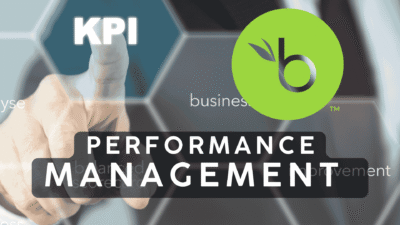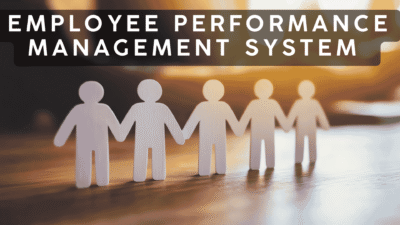More than 70% of organizational transformation initiatives fall short of their goals. This staggering figure isn’t usually a result of a flawed vision but rather a failure in execution. The bridge between a brilliant strategic idea and its successful implementation is often fragile, and it collapses without a structured, intentional approach to managing the human side of change. This is where a robust change management plan template becomes your most critical asset. It transforms ambiguity into a clear roadmap, ensuring that your team navigates the transition smoothly and effectively, rather than becoming another statistic.
This guide is not just about filling in blanks on a generic document. Instead, it provides you with a blueprint to build and deploy a dynamic change management plan template tailored to your organization’s unique needs. We will move beyond theory to provide actionable steps, advanced strategies, and practical insights to empower you as a leader of change.
1. Understanding the Core Components of a Change Management Plan Template
Before you can build a house, you must understand the foundation, the walls, and the roof. Similarly, an effective change management plan template is built upon several critical components that work in synergy. Neglecting any one of these can jeopardize the entire initiative.
1.1. Defining the Change and Aligning with Objectives
The first step is achieving absolute clarity. You need to articulate precisely what is changing, why it’s changing, and how it aligns with the broader strategic goals of the organization. This isn’t just a summary; it’s a compelling case for the change.
- What: Describe the specific processes, systems, job roles, or organizational structures that will be different.
- Why: Explain the business drivers. Are you seeking to increase efficiency, improve output quality, respond to market shifts, or enhance operational stability?
- Scope & Objectives: Clearly define the boundaries of the change. Who will it affect directly and indirectly? What are the specific, measurable, achievable, relevant, and time-bound (SMART) goals you aim to achieve with this transformation?
1.2. Stakeholder Analysis and Engagement Strategy
Change is a personal journey for every individual it touches. A stakeholder analysis identifies everyone affected by the change, from senior leaders to frontline employees. For each group, you must assess their level of influence and their potential reaction to the change. Subsequently, you develop a tailored engagement strategy. For instance, senior executives might require concise, data-driven briefings, whereas a technical team may need detailed documentation and hands-on workshops.
1.3. Communication Plan: The Heartbeat of Change
A communication plan is arguably the most vital component. It dictates the flow of information throughout the change lifecycle. A solid plan outlines:
- Key Messages: The core information that needs to be communicated, tailored to different stakeholder groups.
- Audience: Who needs to receive the information?
- Timing/Frequency: When and how often will communications be sent?
- Channels: What methods will be used (e.g., emails, team meetings, newsletters, one-on-one discussions)?
- Feedback Mechanism: How will you listen to and address concerns from employees?
1.4. Training and Development Roadmap
People cannot adopt a change they don’t understand or for which they lack the necessary skills. The training roadmap identifies knowledge and skill gaps created by the change. Consequently, it outlines a plan to bridge these gaps through targeted training sessions, workshops, and resource materials. This proactive approach builds competence and confidence, turning apprehension into readiness.
1.5. Measuring Success: Metrics and Key Performance Indicators (KPIs)
How will you know if the change was successful? This section of your change management plan template defines the metrics for success. These should be a mix of project-related metrics (e.g., was the new system implemented on time?) and people-centric metrics (e.g., what is the adoption rate of the new process? What does employee feedback indicate?). Tracking these KPIs provides objective evidence of progress and helps in making data-driven adjustments.
2. How to Build Your Custom Change Management Plan Template
With the core components understood, you can now move to the practical application of building your own template. This is a step-by-step process designed to ensure a comprehensive and actionable plan.
2.1. Step 1: Conduct a Thorough Change Impact Assessment
Begin by mapping out the “before” and “after” states. An impact assessment helps you identify all the processes, teams, and roles that will be affected. For each affected group, detail the specific nature and degree of the impact. For example, a new software implementation might represent a minor change for the finance department (a new reporting module) but a major change for the operations team (a completely new workflow). This analysis is the foundation for your communication and training strategies.
2.2. Step 2: Assemble Your Change Management Team
Change cannot be led by one person alone. You need to identify and formally appoint a dedicated change management team. This team should ideally include:
- A Sponsor: A senior leader who champions the change and has the authority to remove obstacles.
- Change Lead(s): Individuals responsible for the day-to-day management of the change plan.
- Change Agents/Champions: A network of influential employees from different departments who can advocate for the change and provide peer support.
2.3. Step 3: Draft the Communication and Engagement Schedule
Using your stakeholder analysis, create a detailed schedule. A simple table can be an incredibly effective visual tool for this part of your template.
| Stakeholder Group | Key Message | Channel | Frequency | Owner |
| Senior Leadership | Progress against KPIs, ROI | Weekly Dashboard Email | Weekly | Project Manager |
| Department Heads | Impact on team workflow, resources needed | Bi-weekly Meeting | Bi-weekly | Change Lead |
| All Employees | Reason for change, upcoming training | Monthly Newsletter | Monthly | Comms Team |
2.4. Step 4: Develop a Resistance Management Strategy
Resistance is a natural human reaction to change, not a sign of disloyalty. An effective change management plan template anticipates resistance and plans for it. Identify potential sources of resistance (e.g., fear of job loss, lack of awareness, loss of comfort with old processes) and develop proactive and reactive strategies. Proactive strategies include clear communication and employee involvement, while reactive strategies might involve one-on-one coaching and additional support for struggling individuals.
2.5. Step 5: Integrate Feedback Loops and Iteration Points
Your plan should not be a static document set in stone. It must be a living blueprint that can adapt. Build formal feedback mechanisms into your process, such as surveys, suggestion boxes, or regular “office hours” with the change team. Schedule regular review points (e.g., every two weeks) to assess what’s working and what isn’t, and be prepared to adjust your plan accordingly.
3. Advanced Strategies for Deploying Your Plan
For leaders in complex organizations, a basic template is just the starting point. The following advanced strategies can significantly increase your chances of success.
3.1. Phased Rollouts vs. Big-Bang Implementation
The “big-bang” approach, where a change is implemented across the entire organization at once, carries high risk. A more sophisticated method is a phased rollout. You could pilot the change in a single, receptive department to work out any issues before a wider implementation. This approach allows you to learn, adapt, and build success stories that can be used to motivate the rest of the organization.
3.2. Leveraging Technology for Change Reinforcement
In 2025, technology is a powerful ally. Use project management software (like Asana or Trello) to track change tasks, digital adoption platforms (like WalkMe) to provide in-app guidance for new software, and internal communication platforms (like Slack or Microsoft Teams) to create dedicated channels for change-related discussions and updates. This creates a supportive digital ecosystem around your transformation.
3.3. Acknowledging the Human Element: Leading with Empathy
Ultimately, organizations don’t change—people do. The most advanced strategy is deeply human. Acknowledge the stress and uncertainty that change can create. Leaders who listen actively, demonstrate empathy, and celebrate small wins along the way build trust and goodwill. A short case study illustrates this:
A manufacturing firm was implementing a new automated inventory system. The warehouse team, many of whom had worked there for over 15 years, was resistant. The change manager, Kenji, didn’t just hold a training session. He spent a week working alongside them, listening to their concerns about job security and the difficulty of learning a new system. He then adjusted the training plan to be more hands-on and secured a commitment from leadership that no jobs would be lost. As a result, the team went from being resistors to champions of the new, more efficient system.
4. Common Pitfalls to Avoid
Even the best-laid plans can fail if you’re not aware of common pitfalls. Being forewarned allows you to navigate these challenges proactively.
4.1. The Fallacy of Over-Communication
While a lack of communication is fatal, “over-communication” can also be a problem if it’s not meaningful. Bombarding employees with irrelevant emails will cause them to tune out. The key is not volume but relevance. Your communication must be targeted, timely, and clear.
4.2. Neglecting Middle Management’s Role
Middle managers are the linchpin of any change initiative. They are tasked with translating senior leadership’s vision into actionable steps for their teams. If they are not fully bought in, trained, and equipped to lead the change, the initiative will likely stall at their level. Your change management plan template must have a specific stream of activities dedicated to engaging and empowering this critical group.
4.3. Treating the Template as a Rigid Document
The greatest mistake is to treat your change management plan template as a checklist to be completed rather than a dynamic guide. The business environment is not static, and unforeseen challenges will arise. The purpose of the plan is to provide structure, not a straitjacket. The ability to be flexible, listen to feedback, and adapt your approach is the true hallmark of effective change leadership.
Conclusion
That daunting 70% failure rate for change initiatives is not an inevitability; it is a warning. It speaks to a history of organizations focusing on the “what” of change (the new system, the new structure) while neglecting the “who” and the “how.” A comprehensive change management plan template is your strategic response to this challenge. It is more than a document; it is a commitment to leading with clarity, empathy, and foresight. By using this blueprint to guide your actions, you equip your people for the journey ahead and transform a moment of disruptive change into a lasting competitive advantage.
Frequently Asked Questions (FAQ)
- 1. How detailed should my change management plan template be?
Your template should be detailed enough to provide a clear roadmap but flexible enough to adapt. For major transformations, it will be more extensive. For smaller changes, a more streamlined version focusing on communication and stakeholder engagement may suffice. - 2. What is the main difference between change management and project management?
Project management focuses on the technical side of a change—tasks, timelines, and budgets to deliver a solution. Change management focuses on the people side—ensuring that the solution is embraced, adopted, and used effectively by employees to deliver the expected business outcomes. - 3. How do I handle resistance from senior leadership?
Resistance from leadership often stems from a perceived risk to business continuity or a lack of clarity on the return on investment. Address this by presenting a strong business case with clear data, aligning the change directly to strategic objectives they care about, and securing a powerful executive sponsor to champion the cause among their peers. - 4. Can I use the same organizational change framework for small and large projects?
Yes, the core principles and components remain the same. However, you should scale the activities. For a small change, stakeholder analysis might be an informal conversation. For a large-scale transformation, it would be a formal process with workshops and surveys. - 5. How often should the change management plan be reviewed?
For active projects, the plan should be reviewed frequently—bi-weekly or monthly at a minimum. The review should assess progress against metrics and adapt the plan based on real-time feedback and any new challenges that have emerged.
references
Warning: The provided links lead only to the specified content. Other areas of those sites may contain material that conflicts with some beliefs or ethics. Please view only the intended page. Note: The source links are available in English only.
- Harvard Business Review May–June 2000 Author: Nitin Nohria and Michael Beer Cracking the Code of Change.
Classic HBR analysis that cites the often-quoted ~70% failure rate for change initiatives and explores key obstacles to successful change. - McKinsey & Company December 7, 2021 Losing from day one: Why even successful transformations fall short.
Research and recommendations on transformation failure drivers and actions predictive of transformation success. - Prosci June 7, 2023 The correlation between change management and project success.
Prosci research showing how effective people-side change management correlates with meeting objectives, schedules, and budgets. - Prosci November 1, 2024 Use the ADKAR Model for Change Success.
Authoritative overview of the ADKAR individual-change model and related change-management practices. - Asana January 3, 2025 Free Change Management Plan Template.
A practical, downloadable change-management template and guide showing how to structure communication, roles, and timelines. - Kotter Inc. (no author/date on page) The 8-Step Process for Leading Change.
Kotter’s well-known stepwise methodology for leading organizational change (useful for sponsor and leadership activities). - Project Management Institute (PMI) (no date shown) Managing Change Through Project Management.
Explains the relationship and differences between project management and managing organizational change. - WalkMe (company site; DAP resources) (no single-author/date) WalkMe — Digital Adoption Platform.
Vendor page and resources on digital adoption platforms that support user onboarding and reinforce software-related change.







